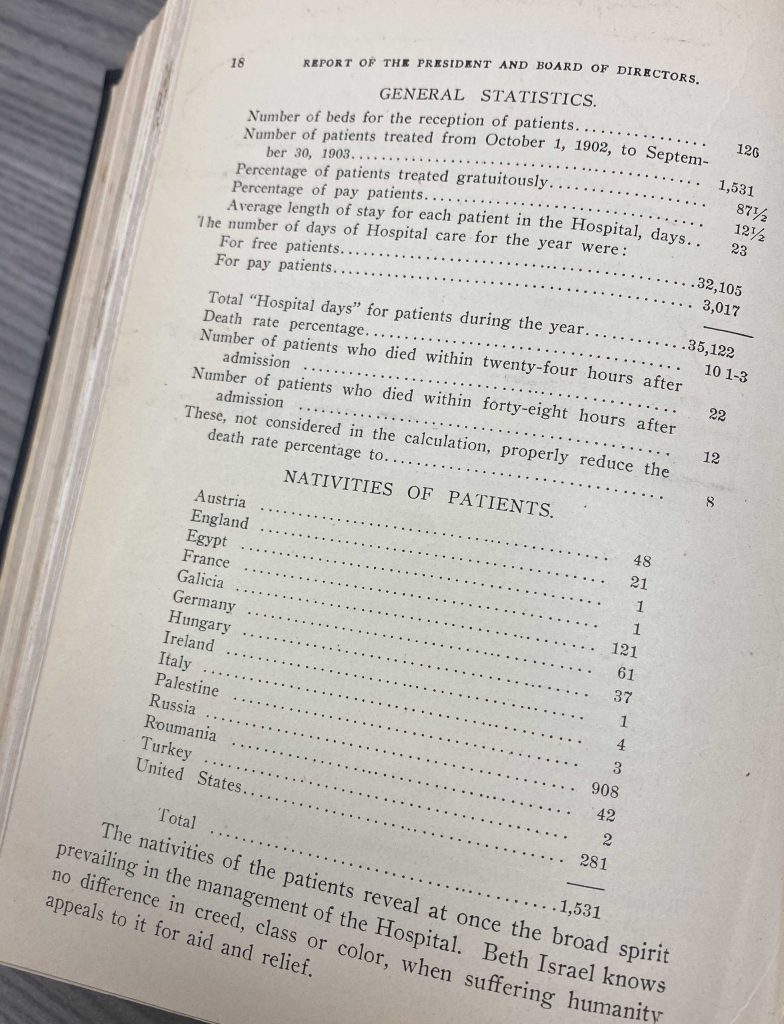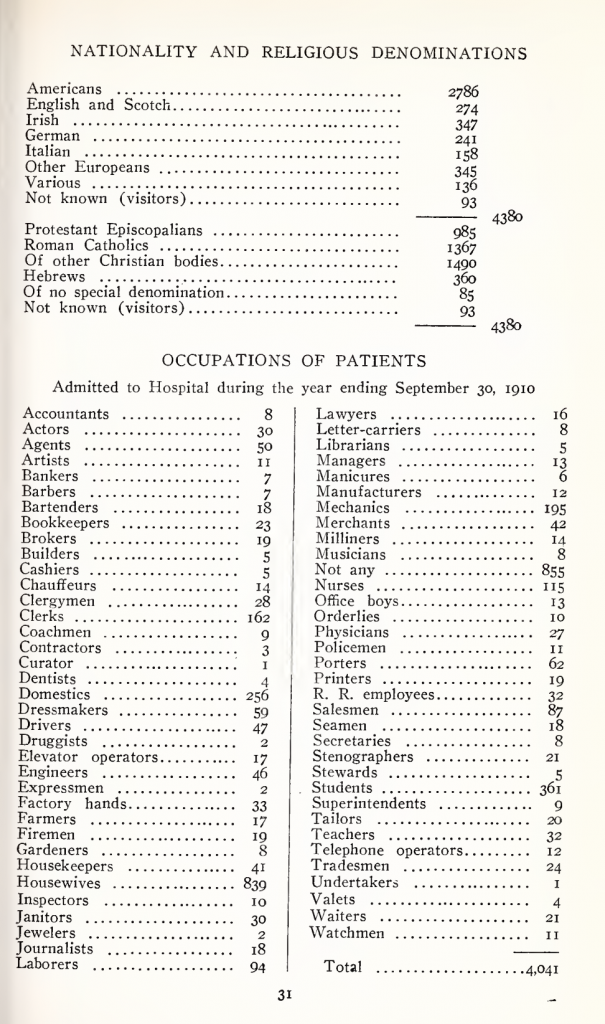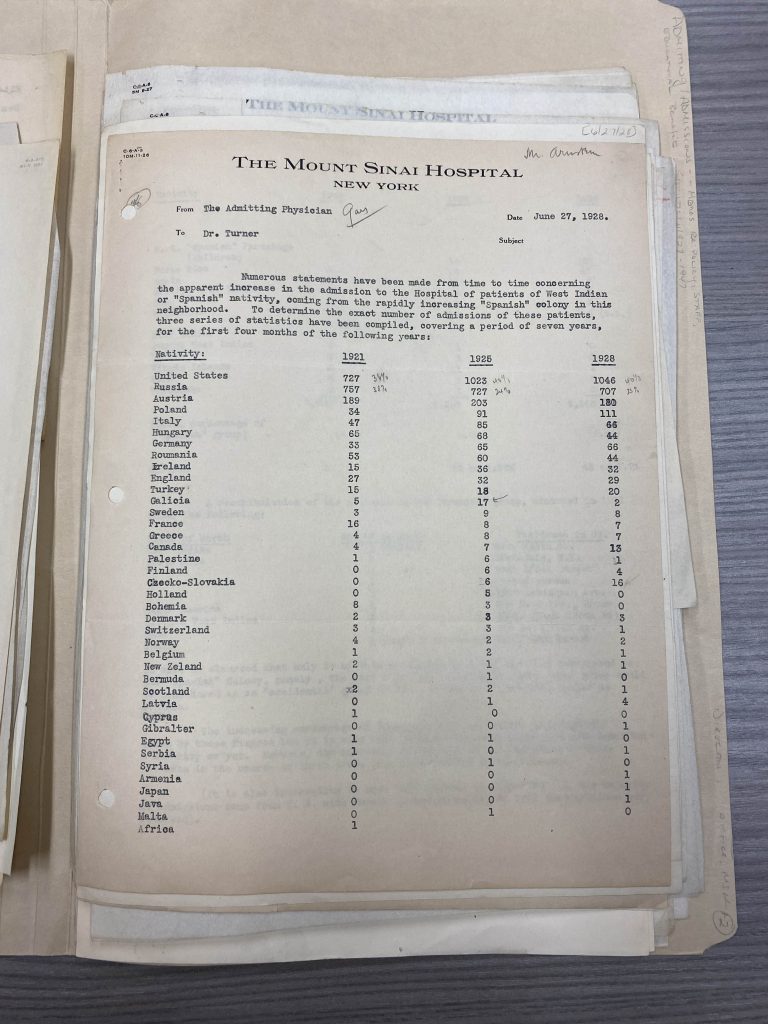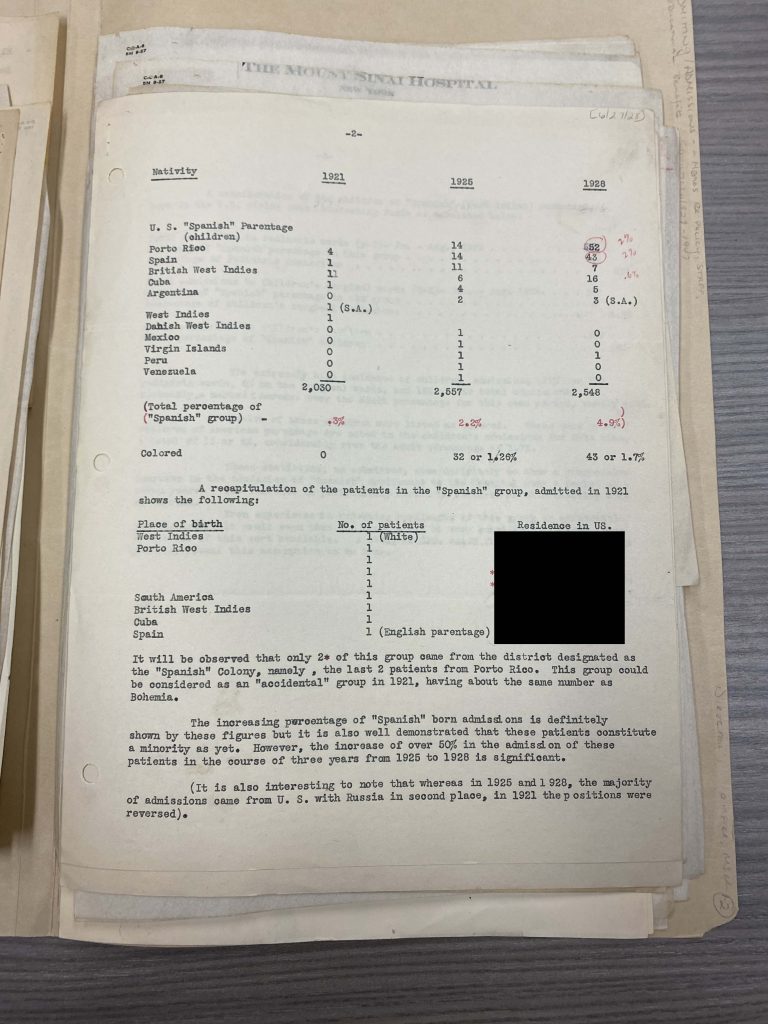This year we’re discussing aspects of Mount Sinai’s history as a community by joining forces with the Institute for Equity and Justice in Health Sciences Education through a series of three Chats for Change programs. In this post I’ll provide some background about what Chats for Change is, how it came to be, the Institute team we’re working with this year, and what the Archives brought to table.
About Chats for Change
In 2015, Mount Sinai launched the Racism and Bias Initiative (RBI) to center underrepresented voices and experiences, recognize the historical underpinnings of racism and bias in medicine, and explicitly address and undo racism and bias in all functional areas of the medical school. Beginning in the fall of 2018, the Department of Medical Education launched “Chats for Change”—a series of dialogues centered on racism and bias in medicine.
Chats for Change was developed in response to medical education staff, faculty, and medical students who wanted dedicated time to engage in a dialogue as a community and deepen their understanding of and ability to address racism. These sessions were based on the notion that in order to respond to racism and to be anti-racist, we must engage in dialogue, learning, and action. Participants include staff, faculty, and students from across the School and Health System. There is also a National Chats for Change available to all medical schools in North America.
The Process
How does this work? The structure of Chats for Change remains the same regardless of the topic. Held over Zoom, facilitators provide some introductory background information and review the grounding assumptions for the dialogue about to take place. The grounding assumptions that I find change the power dynamics are “everyone here is all we need” and “refrain from expecting experts or others to know best.” In both education and healthcare, there is deeply ingrained respect for and deference to expertise. Asking participants to shift out of this mindset is a challenge and requires intentional interactions outside the traditional norms and hierarchy.


The facilitators review the process and hen there is a brief check-in to get everyone acquainted. The next portion is framing and defining that day’s topic with a brief presentation, about ten minutes long.
We then review norms for the breakout groups in which the participants are about to participate:
- All of us are taught misinformation about our own group(s) and about members of other groups
- We agree not to blame ourselves or others for the misinformation we have been taught, and to accept responsibility for not repeating misinformation after we have learned otherwise


The participants enter the breakout rooms with some questions to guide their discussion, keeping in mind that there will be a debrief with the whole group afterwards to share any themes, insights, similarities and/or differences (as shown on the slide here). Every session ends by asking “given today’s dialogue, what do you need to learn and unlearn?”, followed by a request for feedback and a preview of the next week’s topic.
2024 Spring/Summer Season
In planning the 2024 Chats for Change season, Leona Hess, PhD, MSW, Co-Director of the Institute, invited me (the Aufses Archives’ director) to join in on brainstorming topics for discussion.
For this year, we arrived at the following groupings:
- Series on Understanding Islamophobia and Antisemitism
Given the horrific increase in hate crimes against Muslim and Jewish people, it’s imperative for us to commit to deeper understanding and reflection.
- Antiracism Fellow Series
This year’s Institute for Equity and Justice in Health Sciences Education Antiracism Fellows will introduce new topics, challenging all of us to critically examine pressing contemporary issues and the role of medical students.
- Mount Sinai History Series
Pulling from resources in the Aufses Archives, we will uncover how Mount Sinai’s past shows up in our present, how equitable treatment regardless of the ability to pay is a relatively new concept, and how our patient populations have been recorded and reported at different moments in our hospitals’ histories.
- Rejuvenate and Restore (R&R) Series
With everything going on, we can still find time for joy, future dreaming, and collective care.
In addition to these series, there were one-off chats on decolonizing global health, cybersafety, the rural vs. urban divide, and much more.
Mount Sinai History Series

The first Mount Sinai History Series took place on April 23rd, exploring the question, How Does Our Past Show Up in Our Present? by reflecting on our hospitals’ and medical school’s founding charters, articles of incorporation, and mission statements.
At Mount Sinai we often cite our origin story, the opening of Jews’ Hospital in New York in 1855, as a core element of our identity: to treat those who were refused treatment elsewhere (at the time, people of Jewish faith, and accident victims). As a health system, we are now multiple hospitals and a medical school. Pulled from resources in the Aufses Archives, we considered how the histories of these institutions shape us today. To do this, I started with a quote from the Charter of the Jews’ Hospital (which became Mount Sinai Hospital in 1866).

New York State Charter of the Jews’ Hospital in New York
January 16, 1852
We have associated and hereby do associate ourselves into a benevolent, charitable and scientific Society… to be known… by the name of The Jews’ Hospital in New York… the particular business, purpose and object of such… will be the medical and surgical aid to persons of the Jewish persuasion.
Quote from the 1852 Charter

First Mission Statement of The Mount Sinai Medical Center
1979
The focus was on the mission statements and articles of incorporation that state the reasons why the hospitals were created and what they were intending to do. I have found that these statements do resonate with our values and mission today, so I wanted to see how others felt. We asked the Chats participants, “what parts of our legacies most resonate with you?” There was a good discussion.
The second session, Unified Care?, was about how patients have historically been segregated by ability to pay and other factors. This was co-hosted by Dr. David Muller, Director of the Institute for Equity and Justice in Health Sciences Education. We are working towards health equity, we want everyone to have the same care, but there has always been a way of dividing patients that persists today. Goal was to show past practices–the general open ward layout, transition to semi-private rooms, and entirely private care–that demonstrate how we evolved into the patient placements we see in today’s hospitals.



The final session, Who Sought Treatment, took place in August and covered how hospitals have tracked and reported demographics of the patients who sought treatment. Today we are familiar with tracking patient outcomes by identities, such as race or gender–but this has not always been the case. As New York’s demographics have changed through time, so too have the data recorded about people seeking medical care. We looked at hospital reporting to see how patient populations have been recorded and reported at different moments in our hospitals’ histories. We reflected on how our practices have evolved.
As Mount Sinai Hospital was established to care for immigrants, nativity was most frequently reported. The sex, occupation, age, and other categories were also typically tabulated.

Report on patients from Mount Sinai Hospital’s 1866 Annual Report, page 24
Listed: Number of admitted and refused in a single month (over the course of the year) and age.
Report on patients from the 1866 Annual Report, page 25
Listed: civil Condition, term of Residence in the U.S., nativity, and occupation.


Beth Israel Hospital Annual Report from 1903 stated, “the nativities of the patients reveal at once the broad spirit prevailing in the management of the Hospital. Beth Israel knows no difference in creed, class or color, when suffering humanity appeals to it for aid and relief?”
St. Luke’s Hospital Annual report, 1910
Listed nationality and religious denominations, and occupations of patients.

Mount Sinai is based in East Harlem, over half of the population are of Puerto Rican and Dominican ancestry. This document shows when the hospital first became cognizant of the growing population and demographic shifts in the late 1920s. The language is not current, and we say Latino instead of “‘Spanish’ nativity.”


I am so grateful to Leona, David, and the team (Jay especially), who were incredibly supportive partners. They have a the structure of Chats for Change in place, facilitate adeptly, handle the logistics seamlessly—piloting the Mount Sinai History series could not have happened without their partnership.
Authored by J.E. Molly Seegers
